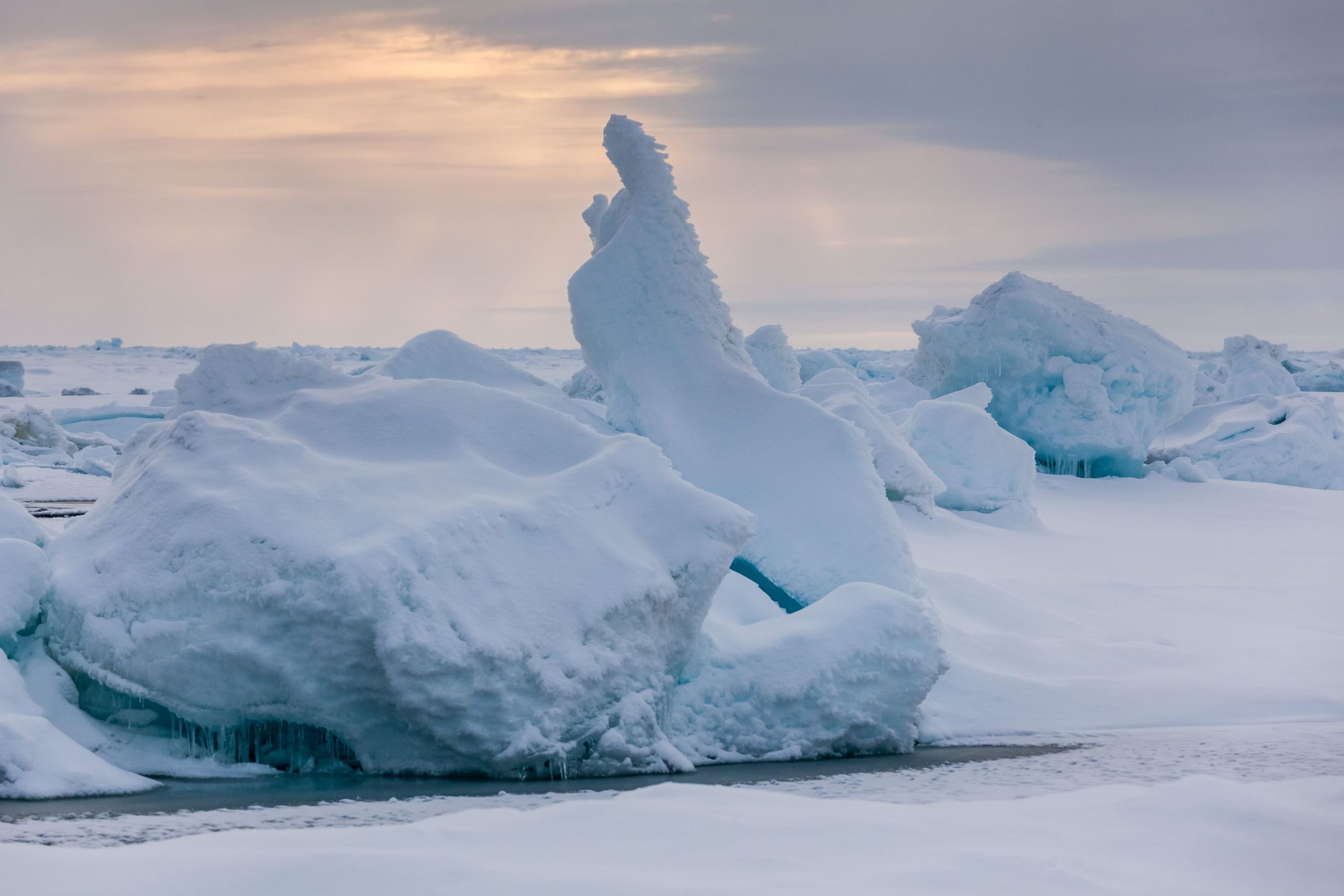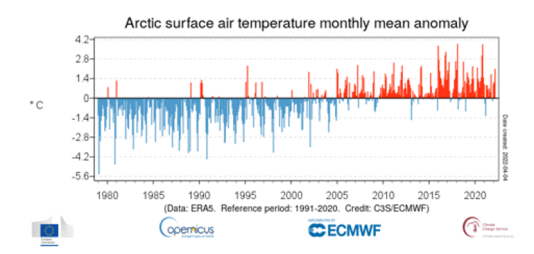Globally fifth warmest March on record Surface air temperature anomaly for March 2022 relative to the March average for the period 1991-2020. Data source: ERA5. Credit: Copernicus Climate Change Service/ECMWF. The Copernicus Climate Change Service (C3S), implemented by the European Centre for Medium-Range Weather Forecasts on behalf of the European Commission with funding from the EU, routinely publishes monthly climate bulletins reporting on the changes observed in global surface air temperature, sea ice cover and hydrological variables. All the reported findings are based on computer-generated analyses using billions of measurements from satellites, ships, aircraft and weather stations around the world. March 2022 surface air temperature: The global average temperature for March 2022 was about 0.4ºC higher than the 1991-2020 average for March which makes it the fifth warmest on record. Europe as a whole was about 0.4ºC cooler than average in March 2022, which is the third coldest in the last 10 years, There was a contrast in temperature anomalies across Europe, with warmer-than-average conditions in the north and colder-than-average conditions in the south; these cold conditions extended into north Africa and across into Russia. It was anomalously warm in large parts of the Arctic and Antarctic. The Arctic saw its fourth warmest March on record in Antarctica daily maximum temperature records were broken March 2022 Sea ice Antarctic sea ice extent for March was 26% below the 1991-2020 average, ranking 2nd lowest in the 44-year satellite record, with large areas of below average sea ice concentration in the Ross, Amundsen, and northern Weddell Seas. Arctic sea ice extent was 3% below the 1991-2020 average, continuing the pattern of below average, but not extremely low extents observed since July 2021. Maps and quoted data values for temperature are from ECMWF Copernicus Climate Change Service’s ERA5 dataset. Area averages for temperature over the European region are for land only with the following longitude/latitude bounds: 25W-40E, 34N-72N. Area averages for temperature over the Arctic region are for all surfaces north of 66N. Maps and quoted data values for sea ice are drawn from a combination of information from ERA5, as well as from the EUMETSAT OSI SAF Sea Ice Index v2.1, Sea Ice Concentration CDR/ICDR v2 and fast-track data provided upon request by OSI SAF. C3S has followed the recommendation of the World Meteorological Organisation (WMO) to use the most recent 30-year period for calculating climatological averages and changed to the reference period of 1991-2020 for its C3S Climate Bulletins covering January 2021 onward. Figures and graphics for both the new and previous period (1981-2010) are provided for transparency. More information about climate variables in March and climate updates of previous months as well as high-resolution graphics and the video can be downloaded here:https://climate.copernicus.eu/monthly-climate-bulletins More information about the C3S data set and how it is compiled can be found here: https://climate.copernicus.eu/climate-bulletin-about-data-and-analysis More information on the switch of the reference period, can be found here:https://climate.copernicus.eu/new-decade-reference-period-change-climate-data Answers to frequently asked questions regarding temperature monitoring can be found here: https://climate.copernicus.eu/temperature-qas |
| Copernicus is a component of the European Union’s space programme, with funding by the EU, and is its flagship Earth observation programme, which operates through six thematic services: Atmosphere, Marine, Land, Climate Change, Security and Emergency. It delivers freely accessible operational data and services providing users with reliable and up-to-date information related to our planet and its environment. The programme is coordinated and managed by the European Commission and implemented in partnership with the Member States, the European Space Agency (ESA), the European Organisation for the Exploitation of Meteorological Satellites (EUMETSAT), the European Centre for Medium-Range Weather Forecasts (ECMWF), EU Agencies and Mercator Ocean, amongst others. ECMWF operates two services from the EU’s Copernicus Earth observation programme: the Copernicus Atmosphere Monitoring Service (CAMS) and the Copernicus Climate Change Service (C3S). They also contribute to the Copernicus Emergency Management Service (CEMS), which is implemented by the EU Joint Research Council (JRC). The European Centre for Medium-Range Weather Forecasts (ECMWF) is an independent intergovernmental organisation supported by 34 states. It is both a research institute and a 24/7 operational service, producing and disseminating numerical weather predictions to its Member States. This data is fully available to the national meteorological services in the Member States. The supercomputer facility (and associated data archive) at ECMWF is one of the largest of its type in Europe and Member States can use 25% of its capacity for their own purposes. ECMWF has expanded its location across its Member States for some activities. In addition to an HQ in the UK and Computing Centre in Italy, new offices with a focus on activities conducted in partnership with the EU, such as Copernicus, are in Bonn, Germany as of Summer 2021. Copernicus Earth Observation Programme[email protected]+3226270600 |























